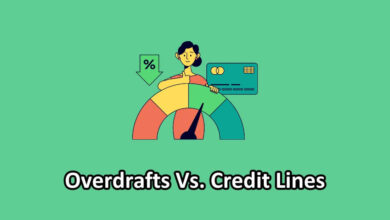Classification and tabulation are foundational techniques in data management that enable the efficient organization and presentation of information. Classification refers to the systematic arrangement of data into categories or groups based on specific characteristics or criteria, facilitating easier analysis and understanding.
On the other hand, tabulation involves summarizing data in a structured format, typically through tables, to present information clearly and concisely. Both techniques play a critical role in transforming raw data into meaningful insights, aiding in decision-making and research processes.
Classification vs. Tabulation (Comparison)
| Factors | Classification | Tabulation |
|---|---|---|
| What are They? | Classification refers to the systematic arrangement of data into categories or groups based on specific characteristics or criteria, facilitating easier analysis and understanding. | Tabulation involves summarizing data in a structured format, typically through tables, to present information clearly and concisely. |
| Purpose | It aims to categorize data into groups for simplified analysis. | It focuses on summarizing and presenting data in a structured table format. |
| Methodology | It involves grouping data based on shared characteristics. | It tnvolves organizing data into rows and columns. |
| Application | Classification is used for data segmentation, trend analysis, and identification of patterns. | Tabulation is used for data presentation, comparison, and detailed analysis. |
| Outcome | Classification results in categorized groups or classes. | Tabulation results in tables or charts that visually display data. |
What is Classification?
Classification is the process of organizing data into distinct categories based on shared attributes or characteristics. It involves sorting information into groups that are mutually exclusive and collectively exhaustive, ensuring that every data point belongs to one and only one category.
The primary purpose of classification is to simplify complex datasets, making it easier to analyze and draw meaningful conclusions. By grouping similar items together, classification helps in identifying trends, making comparisons, and conducting detailed analysis within and across different categories.
This method is widely used in various domains such as biology (for species classification), marketing (for customer segmentation), and library science (for organizing books and resources).
Types of Classification
- Hierarchical Classification: Arranges data into a tree-like structure with different levels of categories.
- Categorical Classification: Groups data based on predefined categories without any inherent order.
- Quantitative Classification: Sorts data into categories based on numerical values or ranges.
- Geographical Classification: Classifies data according to geographical regions or locations.
- Chronological Classification: Organizes data based on time or sequences of events.
III. What is Tabulation?
Tabulation refers to the methodical arrangement of data in tables, where information is presented in rows and columns for easy viewing and analysis. This process involves summarizing raw data into a structured format, making it more accessible and interpretable.
The primary role of tabulation is to provide a clear and organized presentation of data, enabling users to identify patterns, relationships, and trends quickly. Tables facilitate comparison and contrast between different data points, offering a visual representation that aids in data comprehension and decision-making.
Tabulation is essential in statistical analysis, reporting, and data dissemination across various fields.
B. Types of Tabulation
- Simple Tabulation: Presents data related to a single characteristic or variable.
- Complex Tabulation: Involves the cross-tabulation of two or more variables to show relationships between them.
- Frequency Tables: Display the distribution of values for a particular variable.
- Contingency Tables: Used to show the relationship between categorical variables.
- Multidimensional Tables: Present data involving multiple dimensions or variables in a compact form.
Key Differences Between Classification and Tabulation
Purpose
- Classification: Aims to categorize data into groups for simplified analysis.
- Tabulation: Focuses on summarizing and presenting data in a structured table format.
Methodology
- Classification: Involves grouping data based on shared characteristics.
- Tabulation: Involves organizing data into rows and columns.
Application
- Classification: Used for data segmentation, trend analysis, and identification of patterns.
- Tabulation: Used for data presentation, comparison, and detailed analysis.
Outcome
- Classification: Results in categorized groups or classes.
- Tabulation: Results in tables or charts that visually display data.
Conclusion
In conclusion, classification and tabulation are indispensable techniques in the realm of data management, each serving unique yet complementary purposes. Classification simplifies the organization of data into coherent groups, making analysis more straightforward and effective.
Meanwhile, tabulation transforms data into easily interpretable formats, enabling clearer visualization and comparison. Together, these methods empower researchers, analysts, and decision-makers to harness the full potential of data, driving informed decisions and fostering a deeper understanding of complex datasets.
Embracing these techniques can significantly enhance data management practices, paving the way for more efficient and insightful data analysis.


